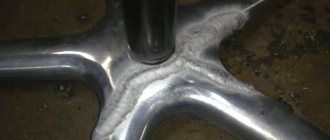During a bathroom renovation, the question of updating old plumbing often arises.
The first candidate for replacement is always a bathtub, especially if it is a cast-iron model that has been there since Soviet times.
After all, the industry offers the consumer a wide selection of other, more modern materials: acrylic, quarry , wood and even marble . Products made from them are often more practical than Soviet cast iron. But, of course, it also has its advantages .
But the question arises: how to dismantle and remove such a colossus? As they say - “break, don’t build.” Let us consider in detail all the nuances of this labor-intensive process.
What are the options?
There are 2 main ways to carry out work:
- dismantling while maintaining integrity:
- only the body itself (when it is not important to preserve the coating)
- font enamel (when the bathtub is planned to be used further for its intended purpose, for example, after restoration)
- destruction.
The first option is simpler from the point of view of dismantling itself, but it causes big problems when removing the product. After all, such a font weighs on average about 100 kg.
This method is worth using if you decide to restore the coating or do something with your own hands from the case itself.
You can breathe new life into an old cast iron bathtub. Craftsmen have come up with many options for its alternative use: flower beds, ponds, garden furniture and much more.
What restoration methods exist?
Option #1 - acrylic coating
Restoring a cast-iron bathtub by pouring acrylic is considered one of the simplest. This is a fairly new method that has gained popularity among consumers. It consists of applying a liquid acrylic solution by pouring it onto the surface of the equipment. Its benefits include:
- Durability. The coating obtained in this way, when applied correctly, retains its properties for 8-15 years. This is due to the fact that acrylic is applied in a fairly thick layer of about 6 mm.
- Smooth glossy surface. The composition is quite thick. It spreads well over the surface of the device, filling possible irregularities, forming an almost perfectly flat and smooth plane.
- Relative simplicity and high speed of application of liquid acrylic.
- There is no unpleasant odor, which allows the work to be performed even in homes where there are people with allergies, children and the elderly.
There are disadvantages to this method. This includes the drying time of the composition. This usually takes about three days, during which it is recommended not to even approach the device. Because debris, dust particles or water accidentally falling on the drying surface can destroy it.
Despite the obvious ease of applying acrylic using the pouring method, it is a rather complex restoration method. Some composition skills required
Another negative point is the relatively high cost. This is higher than enamel. However, this price is justified by the longer service life and good quality of the coating.
Option #2 - do-it-yourself enameling
The oldest recovery method. This vaguely resembles painting, but you must clearly understand what special enamel is used in this case. This needs to be chosen, I wonder how to paint a cast iron bathtub. There are two types of such compositions: for professional use and for independent use. The first ones are very rare and require installation in several layers. This is a rather complicated procedure. The second one is thicker and, accordingly, easier to use.
READ Is It Possible to Saw an Acrylic Bathtub
A correctly selected composition is applied to the prepared surface of the equipment using a roller, and often a brush. Advantages of this method:
- The cheapest restoration option.
- There is no need to disassemble and install additional drain and overflow.
- Suitable for both cast iron and steel bathtubs.
There are many more disadvantages of enameling:
- Service life of new enamel. About 5 years.
- The composition, folded on the surface of the equipment, dries for a long time. About 5-7 days.
- The coating is hard and therefore very sensitive to impacts. Over time, chips may appear.
- The enamel is applied in a fairly thin layer, so it is not able to cover various surface irregularities such as dents, chips, etc.
- Over time, the epoxy coating will turn yellow.
It should be understood that the enamel resulting from restoration is significantly different from that which was originally applied to the equipment.
Cold enamel. The cheapest and easiest way to restore. This is reminiscent of painting a surface with a special composition.
In order for the enamel to last as long as possible, you should follow simple rules. For example, to clean a refinished cast iron bathtub, you will need a mild soap solution rather than abrasive powder. Otherwise the enamel will be damaged. The device should be protected from impacts, especially sharp objects, and do not pour too hot water into it. When filling the tank, first open the tap with cold water, and only then with hot water.
Option #3 - “bath to bath” method
This is the name of the restoration method, which consists of installing an acrylic liner that completely follows its contours inside the old structure. The liner is attached to a special adhesive foam. With proper operation, the service life of the bath after restoration is about 15 years. Main advantages of the method:
- Durability of the new coating. Acrylic is much stronger than enamel.
- The smooth surface hides all the defects of the old design.
- The surface does not turn yellow over time.
- A successful combination of the advantages of acrylic and cast iron bathtubs.
The disadvantages of this method include the need to dismantle the drain siphon and the prohibition on installing liners in thin structures, which are called “light cast iron” or “thin cast iron”. This is because the hardware may bend and the adhesive layer that holds the liner in place will be damaged. The “bathtub for bathtub” method is very demanding on the quality of materials. Using a low quality insert or the wrong adhesive, the bathtub cannot be repaired.
Installing an acrylic liner is a simple and effective restoration method. Particular attention should be paid to the size of the liner. This should fit the bathroom perfectly
All three methods require hardware upgrades. This step usually involves cleaning the cast iron bathtub of dirt and grease. Degreasing is carried out with oxalic acid or baking soda. All defects are thoroughly cleaned to ensure a smooth surface. Then grinding is carried out. The result should be a rough surface. When applying the desired composition, adhesion to it will be maximum.
Tools
To carry out the work efficiently, you will need the following tools:
- perforator;
- chisel;
- chisel;
- hammer;
- gas key;
- Bulgarian;
- sledgehammer;
- respirator;
- protective glasses.
The work ahead will be very dusty and dirty, so you need to take care of protective equipment.
At a minimum, you should take a respirator and safety glasses.
Dismantling a cast iron bathtub using sledgehammers
If it is not possible to remove the cast-iron bathtub entirely, we will remove it in parts:
- Dismantle the siphon and get rid of the building mixture around the perimeter of the bathtub, as described above.
- Try to move the bathtub away from the wall by at least 15 centimeters.
- Cover the bathtub with a damp cloth - this will allow you to protect your body from splinters that may fly off when using a sledgehammer.
- There is no point in hammering with sledgehammers over the entire surface of the bathtub - just delivering a couple of precise, strong blows is enough. You can use a crowbar: in this case, you will need to give one precise blow with a sledgehammer to the crowbar in the place where the drain used to be. If the bathtub does not give way, you can use a grinder and make small cuts on the sides, and then work with a sledgehammer along the bottom of the bathtub.
Related article: Monolithic frame house construction technology: pros and cons
How to dismantle it correctly with your own hands?
Below, we have provided detailed instructions for carrying out the work with all the nuances.
Remove the old siphon
The first step is to disconnect the siphon. As a rule, in old houses these siphons are made of cast iron, and under the influence of moisture and time, all connections sinter and corrode, so it is unlikely to be possible without special compounds that corrode rust. You can use, for example, WD-40 - popularly known as "Vedashka". You need to spray the connections and leave them in this state for 1 hour.
Then, using a wrench, you need to unscrew the nut, thereby disconnecting the siphon.
The diameter of the nut is most often very large, so for this work you will need a gas wrench.
If the nut does not give in and the “century-old layer” of rust is not corroded by any means, all that remains is to cut off part of the pipe with a grinder. Or not? There is one interesting life hack :
- insert the chisel into the hammer drill chuck (this is a special blade-shaped attachment);
- switch it to the “impact without drilling” mode;
- Press the chisel against the end of the nut and press the start button.
Most likely the nut will give way. Do this procedure several times until you can unscrew it with a key or by hand.
Release the sides
Often tiles in the USSR were laid from the side of the bathroom, or even a corner was made from it along the entire perimeter of the wall. In this case, pulling out the bathtub is simply not possible; first you need to knock off the tiles from the sides. For this, an already familiar hammer drill with a chisel is suitable, in impact mode without drilling.
Just go over the edges one by one. If you don’t have a hammer drill, it doesn’t matter. A hammer and chisel can also handle this, but the work will take much longer.
If it is built into the wall of a room?
It also happens that the font is built into the wall, for example, as in the photo. In this case, you will need to remove the legs from the side of this wall. If you can’t unscrew them with a key, or they are firmly embedded in the floor, you can cut them off with a grinder.
Then place wooden boards or a sheet of plywood so as not to split the floor. All that remains is to press hard on the side of the bathtub; you may need the help of a second person, and it will fall down, falling onto the boards. If you can’t push through, you can try using a hammer drill to knock down the part of the wall on which the font rests.
All that remains is to turn it on its side and take it out.
Is it worth cutting off the legs?
Sometimes the legs are dull and deeply embedded in the floor. In such cases, all that remains is to cut them off with a grinder . Take a metal disc and carefully file the back legs first, and then the front ones. This is important because if the order is different, there is a chance that the font will fall on you.
It is better to file the legs at the base (floor). In this case, you will have additional handles that are convenient for transportation. Of course, you should first check whether they are firmly attached to the font.
How to take it out of the apartment?
Once you have released the bowl, place it in an upright position - firmly grasp the upper legs. Then tilt it slightly to make it easier for your partner to grab the lower ones.
The doorway in the bathroom is usually quite narrow . Therefore, it will not be possible to simply endure it. You must first place the front legs behind the doorway. Then move the font diagonally and only then insert the rear legs.
How do they carry it out if the legs are completely cut off? In this case, it will be easier to place the bowl on its long side on its side and gradually move it along the floor, pointing it diagonally into the doorway. After you have taken it out of the bathroom, you can grab one person by the front end, the other by the back (as if you were carrying a stretcher), this will make it easier to pull it out. Further removal is a matter of technology. What to do if there is no partner?
Is it possible to split or break it with a sledgehammer at home?
If you work alone and there is no one to help remove the whole building, a rational solution would be to remove it in parts. To do this you need to break the font. What is the best way to do this?
The fastest, but noisiest and messiest solution would be to use a sledgehammer:
- cover the font with a damp sheet or other large piece of cloth. This will help avoid dust and scattering of fragments.
- Then hit the side of the tub hard with a sledgehammer.
- If the cast iron does not crack, you can use some kind of wedge, for example, a crowbar. And hit him already. The font will definitely split.
- You can cut cast iron into pieces of almost any size.
The main disadvantage of this method is that it will take a long time to clean the space from small fragments and dust. And the noise, of course, will be very loud, because the shape of the bath vaguely resembles a bell.
Is it really possible to break without noise?
Many people often ask this question, because not all neighbors are sympathetic to repairs. Of course, you won’t be able to get rid of the sound completely, but you can make the work a little less loud:
- make several cuts on the body with a grinder;
- insert a piece of ground scrap into them;
- hit the crowbar with a sledgehammer.
The tub should crack.
Is it better to cut it with a grinder and break it?
There is another way to divide the font. It was cut with a grinder. Here, of course, you will have to suffer longer than with a sledgehammer. But there will be much less dust and fragments:
While working, pieces of enamel and scale will fly around, be sure to wear safety glasses and a respirator.
- install a metal disc on the angle grinder (grinder) (it is better to use 230 mm models, with them the process will go much faster);
- start cutting in the middle, sequentially moving from the sides of the bathtub to the bottom;
- when the matter comes to an end, you are already going to go to the bottom and close 2 cutting lines from the front and rear sides - ALWAYS place wooden blocks under the bathtub , otherwise the halves will come together and bite the disk.
- When the cut closes, the work can be considered complete. If the halves do not open, just press lightly on the bottom and it will immediately break.
During operation, the disc must be allowed to cool, so pause every 1-2 minutes.
The procedure can be carried out until the size of the parts satisfies you.
What else can you saw and how to cut? It’s difficult to find an alternative to an angle grinder; you can, of course, make cuts along the sides using a hacksaw, but you won’t be able to cut further.
Preparing to work with the bath
In order to cut a bathtub with a grinder, you should stock up on:
- Angle grinder - grinder.
- Several CDs for her.
- A respirator.
- Safety glasses.
- Dirty clothes that you can throw away later.
Everything should be taken out of the bathroom, because any surface after sawing will be covered with black dust. When dressing for this procedure, you should take into account that the clothes will most likely have to be thrown away afterwards.
Safety glasses and a respirator will prevent cast iron dust from entering the respiratory system and eyes. But this still will not protect completely, and it will take a long time to wash off the black metal dust. Before starting work, you should make sure that the doors are tightly closed, and if they are removed, the opening must be carefully covered with film.
The grinder may come in handy during the dismantling process. If the bathtub has been in use for many years, the drain siphon could be quite rusty. It will have to be cut down, since it could have already “fused” with the pipe. First, near the sewer, and then, pulling out the vacated bathtub and turning it upside down, finally removing it, cutting it close to the wall.
Where to put it with benefit?
You will be surprised, but even from an old, rusty bathtub you can benefit; see how to do this below.
Removal for scrap metal
You can scrap it and get some good money. Some companies even offer free dismantling and removal services, this will save you a lot of time and effort. Read more about how to benefit from this in our special article .
Second Life
If you apply a little imagination and “direct hands”, you can make truly amazing things from cast iron baths. Furniture, ponds and even barbecues. More useful inventions from a cast iron bathtub in our article.
Preparatory stage
Find out who is obliged to handle the disposal of large cargo under an agreement with your management company. The fact is that you do not have the right to throw any bulky garbage and construction waste into a general container with household waste . To dispose of such waste, an additional container may be installed in the courtyard of the house, which is decided upon at a general meeting. Your management company can provide you with this service privately for a fee. If none of the options listed is available to you, you will have to take the garbage yourself to a place specially designated for this purpose, most likely outside the city limits.
Remove all items from the bathroom: washing machine, wall cabinets and shelves, mirrors, sink, toilet - in a word, clean everything.
Dismantle old faucets - if you are undertaking a major renovation, it makes sense to replace all the plumbing fixtures at once. Moreover, the service life of mixers is in most cases short.
Consider whether the bathtub will fit through the doors or whether they will also need to be removed from their hinges or even the entire door frame will need to be dismantled. Even if the bathtub fits into the passages in size, it is necessary to take into account that the bathtub may also have legs, which can easily damage the doors. In most cases, it is easier to remove the door from its hinges for a short time than to buy a new one later. If you absolutely do not want to do this, then try to protect the door covering from damage using some soft cloth or film.
Related article: How to cover a bed with your own hands: features
In such conditions, paying for the service of dismantling and removing the bathroom is sometimes much easier than doing it yourself.
About dismantling methods
There are two ways to replace an old bathtub:
- With saving. The bathtub is carefully disconnected from the rest of the communications in the house and taken out. It can be used in the future. Judging by the reviews, this method is complex and time-consuming.
- No saving. In this case, you can either break the cast iron bathtub or saw it using an angle grinder. The bath pieces are then taken out. Due to the fact that the product now weighs much less, one person can handle this work. According to experienced craftsmen, if it is necessary to dismantle the bathtub, they mainly resort to this method. The disadvantage of this method is that the procedure is accompanied by a very large roar.











